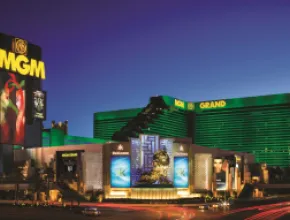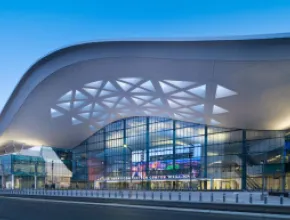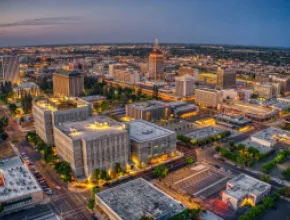Since the 1930s, Louisiana has lost an estimated 2,000 square miles of coastline, according to the National Oceanic and Atmospheric Administration, primarily in the form of disappearing marshes whose land areas combined measure roughly the size of Delaware.
The erosion and disappearance of Louisiana’s coastline is due to a combination of factors, including the natural process of subsidence, rising sea levels and human activities such as levee construction and oil and gas exploration. But rather than watch these things quickly eat away at Louisiana’s shorelines, the Coalition to Restore Coastal Louisiana (CRCL) is on a 35-plus-year mission to slow it all down.
The first statewide nonprofit organization dedicated to coastal restoration in Louisiana, CRCL was founded in 1988 as an advocacy organization to help people in the state, from the general public to policymakers and even the media, see that coastal land loss was occurring and better understand why it was a problem.
With a mission to “unite people in action to achieve a thriving, sustainable Louisiana coast for all,” CRCL represents a unique mix of voices past and present, from businesses to local governments to conservation groups to concerned Louisiana residents and more, “who share a common vision and commitment to the sustainability of coastal Louisiana,” according to CRCL’s website.
Groups large and small can join CRCL in its effort to rebuild and restore Louisiana’s coastline through corporate social responsibility (CSR) programs organized in partnership with the organization, an opportunity even the NFL took advantage of to give back to New Orleans before the city hosted Super Bowl LIX earlier this year.
“Our reason to be is that Louisiana’s coastal wetlands are vanishing before our eyes. Places where it used to be wetlands, where you could walk—your shoes would get wet, but you could walk—you’d be swimming there now. They are farming oysters where there used to be a citrus grove a century ago,” said James Karst, director of communications at CRCL. “So, land loss here has been very rapid, and it obviously impacts people who live there, on land that’s not land anymore.
“It’s been a problem for all of us here because we have industry here, we have communities here, we have New Orleans here, all directly on the coast. The water’s right there, and it’s getting closer by the minute,” he continued. “[CRCL] quickly became very important, very influential in helping to get policymakers to address this crisis that affects all of us who live here, and we’ve branched out from there.”
One of those branches extends all the way out to corporate groups, whose time and volunteer efforts with CRCL are one of the biggest reasons why the organization can do the work it does today to continue making Louisiana a more sustainable, environmentally thoughtful place for everyone, locals and visitors alike.
Here’s a closer look at how CRCL got started in its mission to create a thriving, sustainable Louisiana coast once again, as well as the group CSR and volunteer opportunities offered by the organization.
[Related: How New Orleans Celebrates Sustainably, From Culture to Coastline]
CRCL’s Efforts and Initiatives to Restore Louisiana’s Coast
Arguably the organization’s “legacy” initiative and its first major community-wide push toward restoring Louisiana’s coastline, CRCL’s original Christmas tree recycling program was created a year or two after the organization itself.
At the end of every holiday season, instead of dumping trees into landfills, CRCL partnered with local parishes to collect Christmas trees around the community and used them to create barriers in the water, between moving currents and the shore, to help slow the rate of erosion and create habitats for marine life.
While CRCL’s original program is no longer offered by the organization, it inspired more in the likes that have since proliferated across Louisiana’s coast, and new initiatives have since been added to the organization’s list of efforts to help rebuild Louisiana’s coast that are equally as exciting and effective—and available beyond the holiday season.
[Join us in New Orleans for Meetings Today LIVE! South this fall!]
Oyster Shell Recycling Program (OSRP)
In 2014, CRCL established its Oyster Shell Recycling Program (OSRP), through which the organization partners with New Orleans- and Baton Rouge-area restaurants to collect oyster shells, keeping them out of landfills and using them for something much more sustainable and useful.
“We put the shells back into the water and build oyster reefs with them, and those reefs become living things,” Karst said. “Baby oysters will attach to them and grow on them, and they do something similar to what the Christmas trees accomplish. They create a wall; a hard surface between the moving water and the very soft soil, so they, too, slow the rate of land loss in that way.”
Since starting the program just over a decade ago, CRCL has recycled more than 16 million pounds of oyster shells and protected over 8,600 feet of shoreline, according to its website.
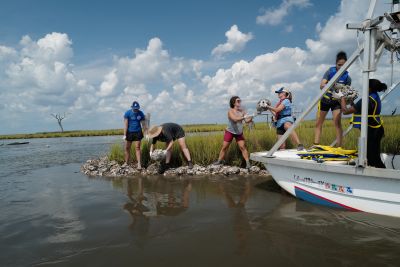
“Corporate groups will come out with maybe 40 employees, and they’ll help us prepare oyster shells to go back into the water, or they’ll help us actually put the shell into the water,” Karst said. “They can sponsor the work, or they can join us and actually do the work.”
The week of Super Bowl LIX in February 2025, CRCL partnered with NFL Green, the league’s environmental program, as well as several other entities to build an oyster reef before the big game.
“The work is really fulfilling,” Karst said. “You get to spend your day on an airboat, or another kind of boat—an oyster boat, an oyster lugger—get on the water and see Louisiana in a much different way than most people see it.”
Many conventiongoers spend their time in New Orleans’ well-known French Quarter and Warehouse District, but volunteering with an organization like CRCL gets visitors outside of the city and shows them another reason to love Louisiana.
“Louisiana is a beautiful place, and it’s a lot of fun,” Karst said. “And it’s very gratifying to actually be doing this work, getting your feet wet and your shirt muddy to help build an oyster reef and interact with the communities that are benefiting from the type of project you’re doing. I encourage groups to support us in that way.”
An easier alternative solution, Karst said, is simply going to one of the New Orleans or Baton Rouge restaurants that participate in the OSRP, ordering a dozen oysters and knowing that, “just by eating oysters, they’re helping to make more Louisiana.”
A full list of participating restaurants is available on CRCL’s website here.
[Related: 4 New Orleans Event Venues That Show a New Side of the City]
Native Plants Program (NPP)
In addition to restoring Louisiana’s coastline, CRCL also spearheads efforts to restore the coastal habitats that once thrived in those lost environments. The organization’s Native Plants Program (NPP) was founded in 2000, and more than 1 million plants native to the coastal wetlands of Louisiana have been planted through CRCL’s NPP since 2007.
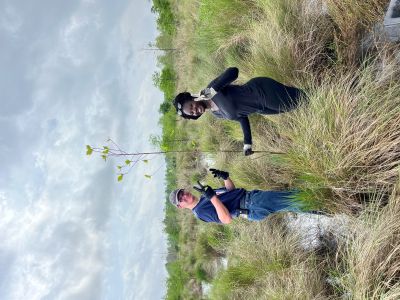
“We work with volunteers through that program as well,” Karst said. “We plant trees and grasses, native species all across Louisiana’s coast.”
There are a couple of big projects happening to restore coastal habitats in the New Orleans area right now, one of which involves planting more than 30,000 bald cypress trees in an area called the Central Wetlands.
“The Central Wetlands are in New Orleans and in St. Barnard Parish,” Karst said. “This was an area that 300 years ago would’ve been beautiful coastal forest, but it was very heavily logged because of those beautiful trees that were there. Then, through some human interventions, we changed the salinity level of these wetlands, so the water became saltier, and that made it so the trees could not survive there.”
Conditions in the area have been corrected, and salinity levels have since recovered. Trees are viable in the Central Wetlands once again, “but it takes a very long time for a forest to grow on its own,” Karst said.
“So, through support of the [Environmental Protection Agency] and others, and the partnership of a number of other organizations, we’re planting all these trees in the next few years and we’re going to make it a forest again,” Karst said. “That’s a magical thing, and volunteers can help us with that as well.”
[Related: New Orleans Is an Authentic Destination Guaranteed to Make Meetings Memorable]
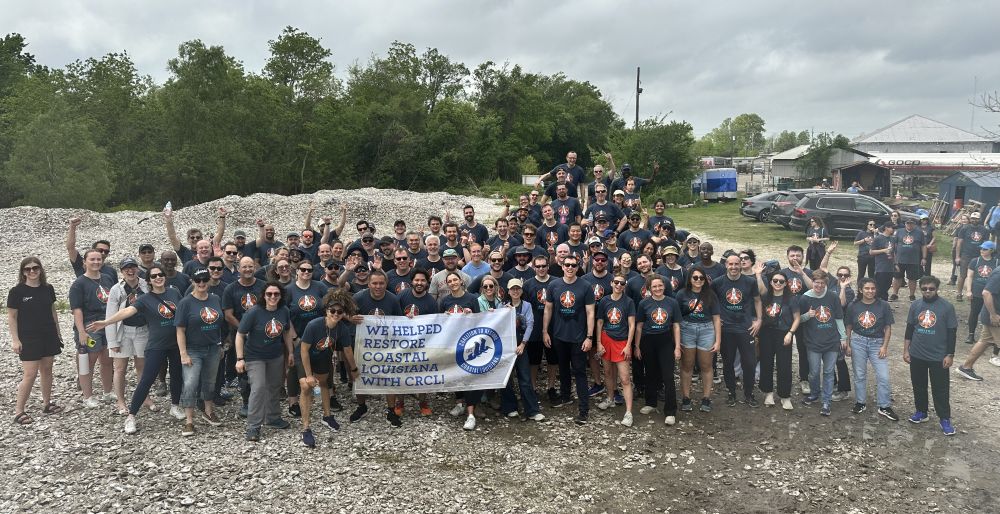
Why Should Groups Work With CRCL?
A lot of meetings and events attendees who travel to New Orleans for business often see the same things while in town, but adding a corporate social responsibility component with CRCL not only shows your attendees a new side of NOLA, but gives them the opportunity to give back.
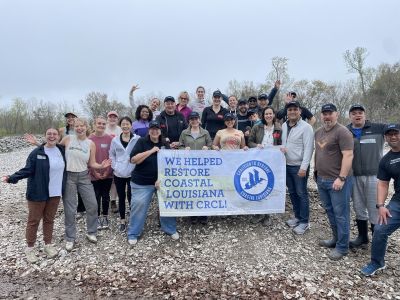
“It helps them to see a beautiful part of the world not many people get to see, and it helps them become a part of a better future for not just Louisiana, but really the whole world,” Karst said. “The issues we are facing here are not unique. They are happening around our planet, in other communities that will continue to face these issues elsewhere. It just happens to be especially dire here, but volunteers get to be a part of the solution.”
No matter how planners decide to work with CRCL, whether having groups participate in the OSRP or NPP, or even organizing for someone from CRCL to speak to a group about the organization’s work, the Louisiana coastline and New Orleans, anything and everything is an opportunity to give back.
“We’ve worked with groups as large as 150 volunteers before, and we’re always willing to try to make things fit. We need all the help we can get in South Louisiana,” Karst said. “If a group of 10,000 people came here and said, ‘Hey, we want to build an oyster reef, I don’t know how we would make that happen,” he laughed, “but we would surely try.
“They’ll probably get to eat some oysters, and they’ll get to meet the wonderful people who live in the communities right on the coast,” he continued. “But most importantly, they’ll leave here feeling like they have accomplished not just something, but something great.”
Connect
Coalition to Restore Coastal Louisiana
Read more corporate social responsibility content from Meetings Today.




